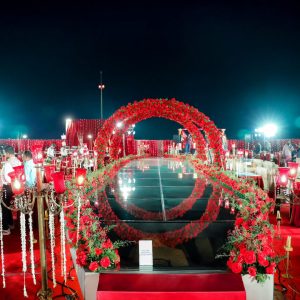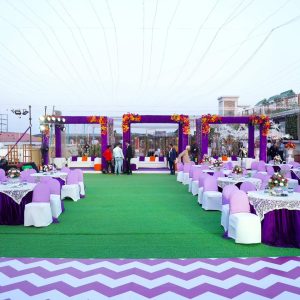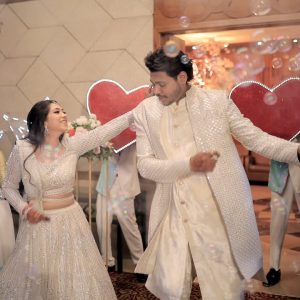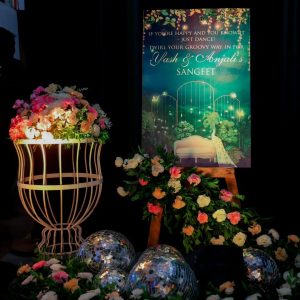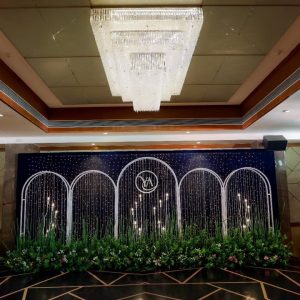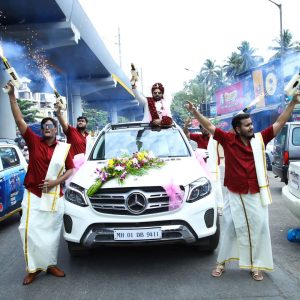India is a land where celebrations are larger than life, and one of the most anticipated and revered events is undoubtedly the Big Fat Indian Wedding. Known for its grandeur, opulence, and traditions, an Indian wedding is more than just a ceremony; it is a cultural extravaganza that can last for days. From the colourful decorations to the endless flow of food and the intricate rituals, every detail is a reflection of deep-rooted customs and the coming together of two families. But what makes these weddings so unforgettable?
The Scale and Extravagance: A Wedding Fit for Royalty
One of the hallmarks of a Big Fat Indian Wedding is the sheer scale of the event. Imagine hundreds of guests gathered in a massive venue, sometimes an opulent palace or an intricately decorated marquee. The atmosphere is electric with music, dance, and joy as friends and families unite to celebrate the union of two souls.
The entire wedding affair can span multiple days. The engagement and mehendi ceremonies, followed by sangeet, the wedding day, and finally, the reception. Each event has its own distinct charm, a series of rituals, and the unmistakable air of excitement.
Venue & Decor: Indian weddings are known for their grandiose venues. From royal palaces to five-star hotels, or even large banquet halls, every location is meticulously chosen to reflect the stature of the event. When it comes to decor, it’s all about vibrancy. Think thousands of marigold flowers, fairy lights, elaborate floral arrangements, and the use of traditional colors like red, gold, and royal blues. The entrance to the venue is often adorned with massive arches, statues, and even fountains!
Clothing & Fashion:
A Big Fat Indian Wedding is synonymous with high fashion. The bride is often seen in a traditional red or gold lehenga or saree, embellished with intricate embroidery and Swarovski crystals. The groom is no less dashing, often in a sherwani, a long coat-like garment, complemented by a turban, and sometimes even a sword. The rest of the guests aren’t far behind, with women donning sarees, lehengas, and Anarkali suits, while the men show up in tailored suits, kurtas, and more.
Rituals and Customs: A Journey through Tradition
Indian weddings are deeply rooted in cultural and religious rituals, which vary based on region, religion, and family traditions. Yet, the one common theme is the celebration of love, commitment, and family.
Pre-Wedding Rituals: The festivities begin well before the main wedding day. The Mehendi ceremony, where intricate henna designs are applied to the bride’s hands and feet, is one of the most eagerly anticipated moments. It’s a celebration of beauty, art, and femininity. The Sangeet, another pre-wedding event, is where families and friends come together for a night of music, dance, and merriment. Expect to see choreographed dance routines, impromptu performances, and a never-ending flow of entertainment.
The Wedding Day: The wedding itself is a spiritual and emotional event.
The Varmala ceremony, where the bride and groom exchange garlands, symbolizes the first step of their marital journey. The Saat Phere, or seven rounds around the sacred fire, is the most sacred ritual, where the couple vows to stand by each other in all situations. The wedding ceremony is often accompanied by the recitation of prayers, blessings from elders, and the chanting of mantras.
The highlight of the event is when the groom places a mangalsutra (sacred necklace) around the bride’s neck and applies sindoor (vermilion) to her forehead, officially marking the woman as married.
Food: A Culinary Wonderland
No Indian wedding is complete without its food. The feast that awaits guests is often a highlight of the celebration. Imagine an endless array of dishes, from appetizers to main courses to dessert, each more delicious than the last. From spicy chaats and kebabs to biryanis and curries, the variety is endless, catering to every palate.
In addition, there is often a lavish dessert spread that includes Indian sweets like gulab jamun, rasgulla, jalebi, and an array of regional treats that vary from state to state. Many weddings even feature a live counter for fresh jalebis or dosas.
Entertainment and Music: The Heartbeat of the Celebration
The music and dance at an Indian wedding are integral to its spirit. The Sangeet sets the stage with professional choreographers teaching family members their dances for the event. Traditional music played with tabla, dholak, and sitar, along with contemporary hits, blend beautifully. Bollywood songs rule the dance floors, with both the young and the elderly shaking a leg.
A wedding DJ or live band often takes over the post-dinner dance sessions. The energy on the dance floor is contagious, with everyone from the bride and groom to the parents and distant cousins joining in on the fun. Traditional dances such as garba (a Gujarati folk dance) or bhangra (a lively Punjabi dance) are common at these celebrations, creating an atmosphere of uninhibited joy.
The Family Bond: A Celebration of Unity
An Indian wedding isn’t just about the bride and groom; it’s about two families coming together. The warmth and love shared between family members are a big part of the celebration. Parents, uncles, aunts, cousins, and distant relatives often play an active role in the ceremonies, rituals, and even planning the events. The involvement of the entire family reflects the deep-rooted value of unity in Indian culture.
The Post-Wedding Reception:
The final event is usually a grand reception, where the newlyweds are introduced as a couple to a wider circle of friends and acquaintances. It’s a celebration of their union with lots of music, laughter, and speeches, followed by a lavish dinner.
Conclusion: A Legacy of Joy and Tradition
A Big Fat Indian Wedding is more than just a marriage; it’s an event steeped in culture, tradition, and a sense of celebration. It represents the perfect blend of old-world customs and modern-day extravagance. While it may appear as a spectacle of opulence and lavishness, at its core, an Indian wedding is about love, togetherness, and honouring family bonds. It’s an experience that stays with you long after the event has ended, a celebration that’s remembered for a lifetime.
Whether you are a part of the wedding or simply an invited guest, attending a Big Fat Indian Wedding is an unforgettable experience—one that showcases the beauty of India’s rich cultural heritage and the joy of unity.


